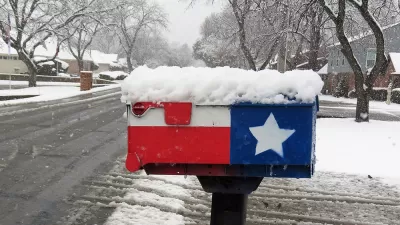BP's chief scientist provides his insight into solving the energy and climate crises, including the affect of higher gas prices and separating transportation from the heat and power sectors when dealing with strategies to reduce carbon emissions.
"After nearly 30 years at Caltech as a professor of theoretical physics and, eventually, provost, Steven Koonin took a leave of absence in 2004 to become BP's chief scientist. After a year of study, he recommended a strategy for the company that has included investments in unconventional sources of oil as well as renewable energies such as solar. Technology Review's energy editor sat down with Koonin...to discuss BP's strategy and whether it will be possible to meet the world's energy challenges.
Technology Review: What's the best way to reduce gas consumption?
Steven Koonin: Raising the price of driving is the simplest way to induce conservation and efficiency. Look at how much response we saw when the price of gasoline went up to $4.50 a gallon. We've seen it work over the last year. But raising gas prices is very difficult politically to do. In fact, you see the candidates going in the opposite direction.
TR: When you look at public policy decisions, what are some other mistakes you've seen?
SK: One is confusing transportation with stationary sources of power and heat. What problems are we trying to solve? If it's carbon dioxide emissions, there are cheaper ways to do it than improving transportation. If you improve the efficiency of a vehicle to reduce fuel use and carbon dioxide emissions, for many vehicle technologies it will take several hundred dollars per ton of carbon dioxide. But transport is only 20 percent of energy-related emissions. Heat and power from stationary sources are most of it. At $50 a ton, there's a lot of carbon that can be wrung out of stationary sources. When you start cranking the price up to $100 to $200, that's when you start to affect transport, whereas we can shift to lower-emissions heat and power at $50 a ton."
Thanks to Pat Carstensen
FULL STORY: Strategies for the Energy Crisis

Manufactured Crisis: Losing the Nation’s Largest Source of Unsubsidized Affordable Housing
Manufactured housing communities have long been an affordable housing option for millions of people living in the U.S., but that affordability is disappearing rapidly. How did we get here?

Americans May Be Stuck — But Why?
Americans are moving a lot less than they once did, and that is a problem. While Yoni Applebaum, in his highly-publicized article Stuck, gets the reasons badly wrong, it's still important to ask: why are we moving so much less than before?

Research Shows More Roads = More Driving
A national study shows, once again, that increasing road supply induces additional vehicle travel, particularly over the long run.

Judge Halts Enforcement of Anti-Homeless Laws in Grants Pass
The Oregon city will be barred from enforcing two ordinances that prosecute unhoused residents until it increases capacity and accessibility at designated camping sites.

Advancing Sustainability in Los Angeles County Schools
The Los Angeles County Office of Education’s Green Schools Symposium brings together educators, students, and experts to advance sustainability in schools through innovative design, climate resilience strategies, and collaborative learning.

Using Old Oil and Gas Wells for Green Energy Storage
Penn State researchers have found that repurposing abandoned oil and gas wells for geothermal-assisted compressed-air energy storage can boost efficiency, reduce environmental risks, and support clean energy and job transitions.
Urban Design for Planners 1: Software Tools
This six-course series explores essential urban design concepts using open source software and equips planners with the tools they need to participate fully in the urban design process.
Planning for Universal Design
Learn the tools for implementing Universal Design in planning regulations.
City of Moreno Valley
Institute for Housing and Urban Development Studies (IHS)
City of Grandview
Harvard GSD Executive Education
NYU Wagner Graduate School of Public Service
City of Cambridge, Maryland
Newport County Development Council: Connect Greater Newport




























